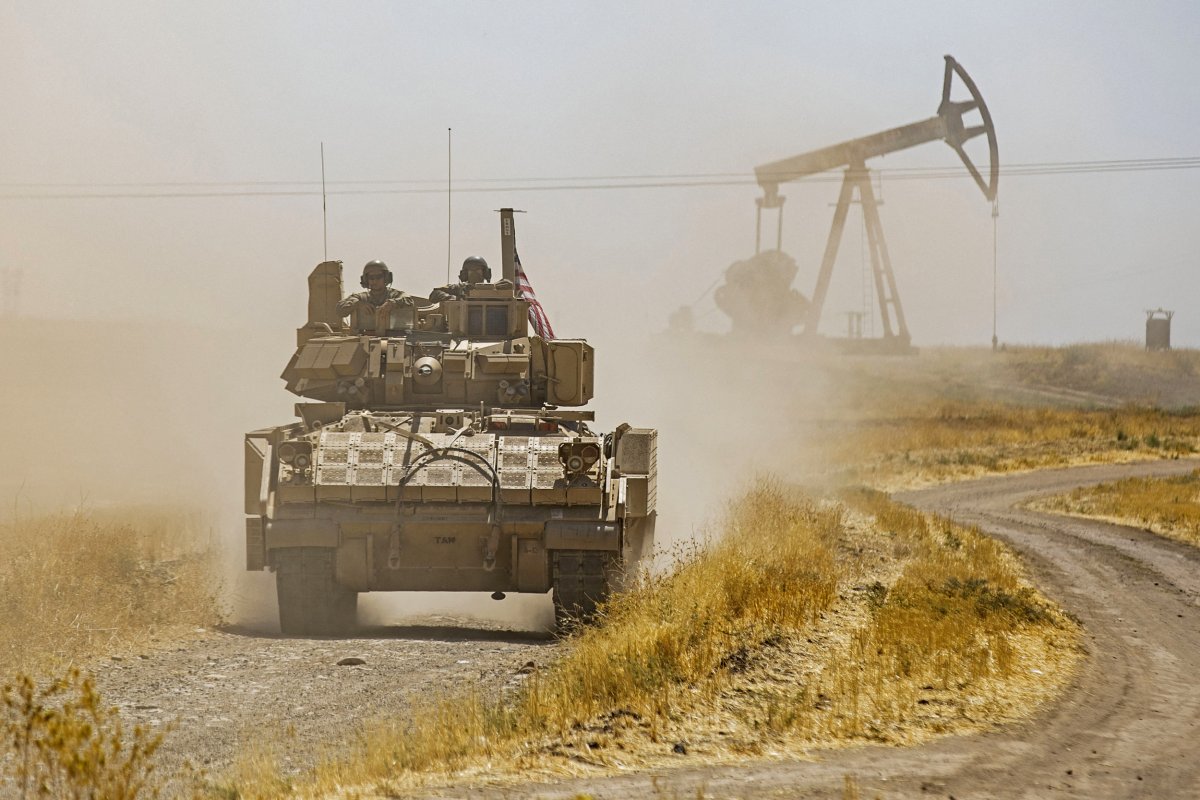Syria's civil war, a conflict that has lasted for more than a decade and killed more than 300,000 civilians, is for all practical purposes over. Bashar al-Assad, Syria's war criminal president, has survived the rebellion against him and is now deep into his rehabilitation tour across the Middle East. Assad's armed opponents are stuck in the northwestern province of Idlib, entirely dependent on international aid. ISIS, located in the east, is at best a local irritant.
While large-scale fighting has died down ever since Turkey and Russia struck a 2020 ceasefire agreement in Idlib, Syria is still a combustible place. Turkish, Iranian, U.S., and Russian forces are all deployed in the country. Turkish troops and the Syrian militias they support frequently get into firefights with Syrian Kurdish fighters whom the U.S. relies on as its main counterterrorism partner. The Russians and Iranians, who teamed up to save Assad, are beginning to compete as both try to recruit Wagner mercenaries who may be out of a job after their aborted mutiny against the Russian government last month. The U.S. launches airstrikes against ISIS positions in the east, and Israel often hits Iranian-affiliated locations in the west—sometimes those strikes shut down Syria's major airports for days at a time.
The U.S. has been especially busy in Syria's skies recently, trying to avert collisions with a Russian air force that is increasingly willing to challenge, if not totally disregard, the deconfliction protocols Moscow signed with Washington years earlier. Those agreements, designed to ensure U.S. and Russian pilots reduce the chances of a disaster, are still technically in force. But U.S. defense officials are having a difficult time explaining why their Russian counterparts are refusing to abide by them. Lieutenant General Alexus Grynkewich, the commander of U.S. Air Forces Central Command, has all but alleged that Russian airmen are hoping to pick a fight. "They're maneuvering aggressively against us when our protocols would say we're supposed to stay ... several miles apart and just monitor each other," Grynkewich told Defense One in April. "The guidance that I've given our folks is we're not going to act like they are."
U.S. pilots have followed their commander's orders with precision. Even so, Russian fighter aircraft have continued to challenge the U.S. in Syria's airspace, forcing the American planes to take evasive maneuvers. U.S. Central Command has reported five separate incidents over the last 12 days. On July 5, three Russian planes harassed U.S. MQ-9 drones as they performed a counter-ISIS mission, dropping flares in front of the aircrafts. On July 14, a Russian surveillance plane flew over the small U.S. base in al-Tanf, purportedly on an intelligence gathering operation. Two days later, a Russian Su-35 jet approached a manned U.S. MC-12 reconnaissance plane and forced the American crew to fly through the larger jet's wake turbulence.
What is causing the Russians to behave in such an aggressive manner? The simple answer is we don't know. It's not as if close-calls between U.S. and Russian forces in Syria haven't occurred before. In one of the more infamous clashes in August 2020, a Russian military truck rammed into an American mine-resistant armored vehicle in the northern Syrian town of Derik, injuring U.S. soldiers.

The motives driving the increased regularity of these hostile interactions are hard to comprehend. Chair of the Joint Chiefs General Mark Milley was asked to provide one during a July 18 press conference, but he demurred. U.S. analysts, Milley said, were hard at work "trying to figure that out." While it's true that Russia wants the roughly 900 U.S. troops in Syria to leave after an eight-year presence on the ground, it's puzzling that Moscow would think that military pressure would actually compel Washington to pull out. If anything, aggressive Russian military actions in the air are liable to do the exact opposite: convince U.S. military planners to deploy more firepower in the Middle East, both as a message of resolve to the Russians and as a precautionary measure. It wouldn't be a surprise if Russia's behavior in Syria was at least partly responsible for the U.S. sending additional F-35 and F-16 fighters to the region (although the Pentagon justified these deployments as a reaction to Iran's harassment of civilian vessels in the Strait of Hormuz).
Ultimately, the more important question is why U.S. forces remain in Syria in the first place. Asking this question isn't meant to excuse Russia's unsafe and unprofessional military conduct or wave off the fact that Russian fighter pilots are acting like careless teenagers going for a joy ride at 80 miles per hour. Rather, it's meant to scrutinize why the U.S. continues to put itself in the position of having to avert these types of near-misses in the first place.
If a U.S. presence in Syria was absolutely necessary for the safety and security of the American people, then the repeated spats with the Russian military would be the unfortunate cost of doing business. But that case has lost its luster. ISIS may not be down for the count, but its territorial caliphate certainly is—the group hasn't controlled any territory in Syria for over four years. According to the Pentagon's inspector general for the counter-ISIS mission, ISIS' cash reserves are depleted, its leadership cadre is under continuous pressure, and the group's fighters don't have the capacity to conduct operations beyond unsophisticated attacks against rudimentary targets. If you think this progress would be sacrificed after a U.S. troop withdrawal, think again: nobody in Syria, not Bashar al-Assad, the Iranians, or the Turks have an interest in allowing the terrorist group to resurge.
The bottom line: As long as the U.S. stays in Syria, the types of mid-air incidents we've witnessed almost daily with the Russians over the last week will continue.
Daniel R. DePetris is a fellow at Defense Priorities and a syndicated foreign affairs columnist at the Chicago Tribune.
The views expressed in this article are the writer's own.
Uncommon Knowledge
Newsweek is committed to challenging conventional wisdom and finding connections in the search for common ground.
Newsweek is committed to challenging conventional wisdom and finding connections in the search for common ground.
About the writer
To read how Newsweek uses AI as a newsroom tool, Click here.








